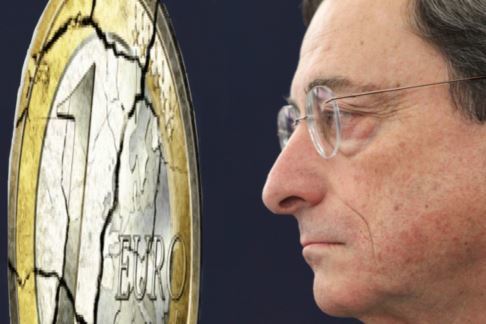Steve Bull's Blog, page 1258
November 13, 2017
When a Zippo Is Not Enough, These Fire Starting Materials Could Be a Lifesaver
 ReadyNutrition Readers, this piece is a reiteration of fire-starting basics in terms of materials to stockpile for yourselves, for your winter-fires or for a grid-down/collapse event. You can place these materials in your home, in your “Bug-Out” bag, your vehicle, and in your work locations. Sometimes the Zippo lighter is not enough, and you need a little more material in order to “kick start” your fires. Let’s cover some of them as well as simple procedures to keep them waterproof.
ReadyNutrition Readers, this piece is a reiteration of fire-starting basics in terms of materials to stockpile for yourselves, for your winter-fires or for a grid-down/collapse event. You can place these materials in your home, in your “Bug-Out” bag, your vehicle, and in your work locations. Sometimes the Zippo lighter is not enough, and you need a little more material in order to “kick start” your fires. Let’s cover some of them as well as simple procedures to keep them waterproof.
There are several types of stormproof and windproof matches. The company I recommend for them are UCO windproof and waterproof matches. You can purchase these at Cabela’s or you can visit the site at UCO gear.
These guys deliver, and they come within a case that keeps them waterproof (even though they can be submerged under water and then struck on virtually any surface). At $5 to $7 they’re a good investment. Strike anywhere matches can be waterproofed, however, they are hygroscopic, meaning they absorb moisture/humidity/water with time.
Along with matches, you’ll need a good lighter. Everyone is familiar with the Zippo, that works on white gas/Coleman fuel, as well as gasoline. They are good to have for a backup when the times are tough, and butane is in short supply. The drawbacks lie in the fact that they leak, meaning the lighter doesn’t stay closed and loses/evaporates its fuel. Also, you need flints and wicks with them.
For disposables, I really like the ones made by Djeep, a French firm. They are short, rectangular, and stubby, and they both take a beating and are dependable. It can’t hurt to pick up a few dozen of them.
…click on the above link to read the rest of the article…
PERENNIAL POLYCULTURES AND THE RICHNESS OF DIVERSITY

PERENNIAL POLYCULTURES AND THE RICHNESS OF DIVERSITY
THE WAY NATURE PROVIDES
Imagine walking down a country road. On one side of the road, you see acres and acres of corn grown in neat rows. On the other side of the road stands an old-growth forest filled with towering trees and a thick underbrush. If you were to ask anyone which side of the road produced the most food, almost everyone would say that the cornfield is a symbol of abundance; and while the forest might be pretty, it is simply not productive.
We have been taught that food can only be grown in orderly rows and that the wildness of nature might be pretty but simply can´t provide for our well-being and sustenance. Imagine, now, that you turn off that country road and begin to walk through the old growth forest. Underneath a pine tree, you might find thousands of pine nuts scattered on the ground. Oyster and shitake mushrooms sprout from decaying logs while a flush of morel mushrooms blooms in a patch of fallen leaves.
A wild blueberry bush provides fresh fruit in a clearing while currants grow well in the shade of the larger trees. You might even come across a gnarly, old apple tree providing an abundant crop. The thick forest provides a great habitat for deer, turkey, and other tasty wildlife as well. Hundreds of other less known edible greens may make up part of the ground cover of the forest floor.
Nature always tends towards abundance, though it may not be the neat and orderly abundance that we see in the cornfield. The production of edible foodstuffs in an old growth forest may very well outcompete the cornfield on a calorie by calorie basis.
…click on the above link to read the rest of the article…
This Is What A Pre-Crash Market Looks Like
 The only other times in our history when stock prices have been this high relative to earnings, a horrifying stock market crash has always followed. Will things be different for us this time? We shall see, but without a doubt this is what a pre-crash market looks like. This current bubble has been based on irrational euphoria that has been fueled by relentless central bank intervention, but now global central banks are removing the artificial life support in unison. Meanwhile, the real economy continues to stumble along very unevenly. This is the longest that the U.S. has ever gone without a year in which the economy grew by at least 3 percent, and many believe that the next recession is very close. Stock prices cannot stay completely disconnected from economic reality forever, and once the bubble bursts the pain is going to be unlike anything that we have ever seen before.
The only other times in our history when stock prices have been this high relative to earnings, a horrifying stock market crash has always followed. Will things be different for us this time? We shall see, but without a doubt this is what a pre-crash market looks like. This current bubble has been based on irrational euphoria that has been fueled by relentless central bank intervention, but now global central banks are removing the artificial life support in unison. Meanwhile, the real economy continues to stumble along very unevenly. This is the longest that the U.S. has ever gone without a year in which the economy grew by at least 3 percent, and many believe that the next recession is very close. Stock prices cannot stay completely disconnected from economic reality forever, and once the bubble bursts the pain is going to be unlike anything that we have ever seen before.
If you think that these ridiculously absurd stock prices are sustainable, there is something that I would like for you to consider. The only times in our history when the cyclically-adjusted return on stocks has been lower, a nightmarish stock market crash happened soon thereafter…
The Nobel-Laureate, Robert Shiller, developed the cyclically-adjusted price/earnings ratio, the so-called CAPE, to assess whether stocks are likely to be over- or under-valued. It is possible to invert this measure to obtain a cyclically-adjusted earnings yield which allows one to measure prospective real returns. If one does this, the answer for the US is that the cyclically-adjusted return is now down to 3.4 percent. The only times it has been still lower were in 1929 and between 1997 and 2001, the two biggest stock market bubbles since 1880. We know now what happened then. Is it going to be different this time?
…click on the above link to read the rest of the article…
The Kids Are Not Alright

Debt initially dazzles and deceives, then it disappoints, disillusions, devastates, and destroys.
The thing governments do best is borrow. Performance varies across the range of their purported functions—warfare, maintenance of public order, provision of goods and services, redistribution, regulation—but they all go into debt. The structure of governments and their underlying philosophies also vary, but there’s one commonality. They are set up to optimize their own borrowing. Thus, central banks are essential.
There is a cottage industry devoted to the minutia of central bank personnel, policies, and pronouncements and what they mean for humanity’s future. Actually, cottage industry is not a correct characterization. No cottage industry could generate the kind of money paid to central banking’s acolytes.
After months of speculation, President Trump named Jerome Powell as the next Chair of the Board of Governors of the Federal Reserve System. If you know why the Fed exists and how it operates, the speculation was so much dross. The Federal Reserve exists to “facilitate” the US government’s issuance of debt. Mr. Powell will do what Janet Yellen, Benjamin Bernanke, Alan Greenspan, Paul Volker, G. William Miller, Arthur Burns, and every chairperson has done on back to the first one, Charles Hamlin: make it easier for the government to borrow. All of the other candidates would have done the same.
Central banks, their fiat debt, and ostensibly private banking systems that either control or are controlled by governments (take your pick) have facilitated unprecedented global governmental indebtedness. Suppressed interest rates and pyramiding debt via fractional reserve banking, securitization, and derivatives have led to record private indebtedness as well. The totals so dwarf the world’s productive capacities as measured, albeit imperfectly, by gross domestic product figures that the comparison yields an inescapable conclusion: most of this debt cannot be repaid.
…click on the above link to read the rest of the article…
Drums of Big War Heard in Middle East

Drums of Big War Heard in Middle East
Summing up the recent events in the Middle East leads to the conclusion that the threat of a Saudi-Iranian war is looking increasingly credible as tensions rise in the Middle East. There are visible signs that the region is heading into an out and out conflict, waged simultaneously in different places and involving many actors.
Fears of an imminent conflict in Lebanon rose on Nov.9 as Gulf Arab states followed Saudi Arabia’s lead in calling on their citizens to immediately exit Lebanon, whose former prime minister had resigned, citing an assassination plot against him as the reason. He blamed Iran and its Lebanese ally Hezbollah for sowing strife, destruction and ruin wherever it went in the Arab world. Having flown to Saudi Arabia, he accused Tehran of being driven by a “deep hatred for the Arab nation.”
The resignation not only brought down the coalition government and plunged Lebanon into a new political crisis but also thrust the country into the frontline of regional competition between Sunni Saudi Arabia and Shi‘ite Iran. The minister is a Sunni in Lebanon’s sectarian system and his stepping down risks exacerbating sectarian tensions between Sunni and Shi‘ite Muslims.
Tensions between Saudi Arabia and Iran escalated with Saudi Crown Prince Mohammed bin Salman bin Abdulaziz blaming Tehran over the ballistic missile fired at Riyadh by Yemen’s Iran-backed Houthi rebels. Saudi air defenses intercepted a ballistic missile fired November 4 from the areas under rebels’ control. The missile was destroyed near King Khalid international airport on Riyadh’s northern outskirts. Supplying rebels in Yemen with missiles was a “direct military aggression by the Iranian regime,” the prince said on Nov.7. The Saudis say that retaliation will follow, while the Houthis threatened to continue attacks against Saudi Arabia and the United Arab Emirates, its closest ally.
…click on the above link to read the rest of the article…
Australia, energy storage and the Blakers study
 Roger Young’s recent post focused on the question of whether the energy storage requirements listed in Prof. Andrew Blakers’ study “100% renewable electricity in Australia” were realistic, but at the time no hard numbers on exactly how much storage Prof. Blakers’ scenarios would require were available. I have now come up with some reasonably hard numbers by applying Blakers’ scenarios to recent Australian grid data. Because the grid data cover a period of only a few months these numbers are not fully diagnostic, but they are sufficient to confirm Roger Young’s conclusion that the Blakers study seriously underestimates storage requirements.
Roger Young’s recent post focused on the question of whether the energy storage requirements listed in Prof. Andrew Blakers’ study “100% renewable electricity in Australia” were realistic, but at the time no hard numbers on exactly how much storage Prof. Blakers’ scenarios would require were available. I have now come up with some reasonably hard numbers by applying Blakers’ scenarios to recent Australian grid data. Because the grid data cover a period of only a few months these numbers are not fully diagnostic, but they are sufficient to confirm Roger Young’s conclusion that the Blakers study seriously underestimates storage requirements.
Modeling 100% renewable energy scenarios has become a popular activity among academics. An example is the recent study published by Professor Andrew Blakers et al., which based on model results concluded that 100% renewable generation in the National Electricity Market (NEM) grid area of eastern Australia could be supported by only 400-500 GWh of energy storage. In his recent post Roger Young concluded that the true requirement was closer to 6,800 GWh, over thirteen times higher.
Roger Young’s estimate was, however, based on a back-of-the-envelope calculation. In this post I calculate storage requirements for Blaker’s two basic renewables scenarios – 80 wind/20 solar and 55 wind/45 solar – using 97 days of actual grid data (from 27 July through November 2, 2017) that cover all of Australia except Northern Territory. The results show that at least 2,800 GWh of storage would have been needed to support an Australia-wide, wind-solar-powered grid over this period, about six times greater than the Blakers study estimate. This 2,800 GWh estimate will, however, underestimate long-term storage requirements, quite possibly by a large amount. Roger Young’s back-of-the-envelope estimate of 6,800 GWh may therefore not be too far off the mark.
Analoguing the Blakers scenarios:
…click on the above link to read the rest of the article…
European Banking Crisis
 There is intense resistance building against the stricter new rules on bad loans among the European banks. This will hit Italy hard and may push off the edge more than one Italian bank. With the elections coming next year in Italy, the banking rules may be the straw that breaks the back.
There is intense resistance building against the stricter new rules on bad loans among the European banks. This will hit Italy hard and may push off the edge more than one Italian bank. With the elections coming next year in Italy, the banking rules may be the straw that breaks the back.
The background to the dispute is the demand of the ECB’s banking supervisor that banks must withhold higher reserves for the default-prone loans in their portfolios. The crisis stems from the fact that as taxes have increased, the economy has declined. The total bad loans in the Eurozone add up to about €844 billion euros. About 25% of this figure is concentrated in Italian banks.
A good stiff wind may blow over the European banking system
November 11, 2017
Geopolitical Tsunami: Pax Americana, Petrodollar, & The Coming Crisis In The Gulf
It’s easy to get lost in all things Middle East, especially concerning the chaotic events that unfolded over the weekend in Lebanon and Saudi Arabia.
Three days after the most stunning purge in recent Saudi history – which was really a countercoup, that led to the arrest of dozen of Saudi Arabian royals, ministers and businessmen to further the control of the Kingdom – Saudi Arabia called Yemen’s missile launch on Riyadh an ‘act of war’ by Iran, and also played victim by saying Lebanon has declared war against the Kingdom.
How to make sense of this all?
An author on twitter by the handle Black Pigeon Speaks beautifully outlines today’s events in an easy to understand video titled: PAX AMERICANA, PetroDollar & the Coming CRISIS in the GULF…
The author of the video focuses on the Middle East and says a perfect storm is gathering upon the horizon, as the whole world is changing and the only way to change it for the better is to understand the world around you.
The video opens up with a brief understanding of the stunning purge in Saudi Arabia and how it has cleared any potential obstacles for King Salman’s son ascension to the throne.
This was done by a widespread arrest of royals, ministers and businessmen who have large sums of money and control key parts of the economy and parts of the military. Such an unorthodox move is bound to force internal conflict with-in the country that could very well spillover.
In the next section, the author says “this comes all at a time of seeming change for the Kingdom”. Allowing women to drive was merely a window dressing event and the real issue is the country’s economic transition away from oil.
…click on the above link to read the rest of the article…
How Economics Failed the Economy
The Difficult Art of Reckoning With the Human Good

When, in the 1930s, the great economist Simon Kuznets created GDP, he deliberately left two industries out of this then novel, revolutionary idea of a “national income”: finance and advertising. Don’t worry, this essay isn’t going to be a jeremiad against them, that would be too easy, and too shallow, but that is where the story of how modern economics failed the economy — and how to understand how to undo it — should begin. Kuznets’ logic was simple, and it was not mere opinion, but analytical fact: finance and advertising don’t create new value, they only allocate, or distribute existing value — in the same way that a loan to buy a television isn’t the television, or an ad for healthcare isn’t healthcare. They are only means to goods, not goods themselves.
Now we come to two tragedies of history. What happened next is that Congress laughed, as Congresses do, ignored Kuznets, and included advertising and finance anyways for political reasons — after all, bigger, to the politicians’ mind, has always been better, and therefore, a bigger national income must have been better. Right? Let’s think about it.
Today, something very curious has taken place. If we do what Kuznets originally suggested, and subtract finance and advertising from GDP, what does that picture — a picture of the economy as it actually is — reveal? Well, since the lion’s share of growth, more than 50% every year, comes from finance and advertising — whether via Facebook or Google or Wall St and hedge funds and so on — we would immediately see that the economic “growth” that the US has chased so desperately, so furiously, never actually existed at all.
…click on the above link to read the rest of the article…
750,000 Protesters Clog Barcelona Streets, Demands Release Of “Political Prisoners”
Hundreds of thousands of people – 750,000 according to Barcelona police – backing Catalonia’s bid to secede from Spain clogged the streets in downtown Barcelona Saturday to demand the release of jailed separatist leaders.
Close to a million people filled the length of the Avenue Marina that runs from the beach to Barcelona’s iconic Sagrada Familia church, while the jailed leaders’ families made speeches.
Julian Assange






